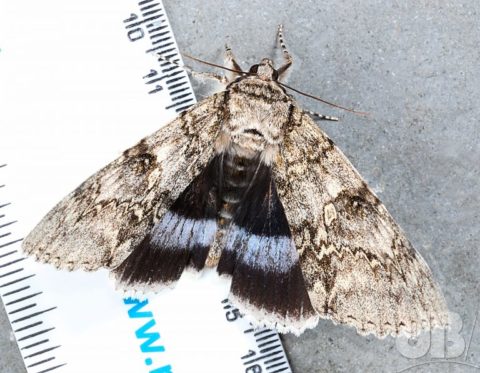Fellow mothers, those who light up in the hope of seeing interesting nocturnal Lepidoptera will know only too well the feeling of disappointment when they check their trap the morning after the night before only to find not a single scaly-winged friend within. A BLANK.

Last night was wet and chilly, early evening it had been dry, cloudless, and chilly, with a bright moon. The local primary school also did their annual fireworks extravaganza. None of this had any bearing on the moths, they just weren’t flying into the trap. So, my first BLANK since last winter. Null results are, of course, scientifically just as important as hits. It is logged in my spreadsheet and will be seen by our County Moth Recorder, Bill Mansfield, in due course.
Meanwhile, here’s a photo of the beautiful and enormous Blue Underwing, better known as the incomparable moth from Cliveden House, the Clifden Nonpareil. Came to my garden in September 2020.
#TeamMoth #MothsMatter
ChatGPT words about mothing:
Moth trapping is a technique used by lepidopterists to collect and study moth species for scientific research. The most common method of moth trapping is the use of a light trap. A light trap is a device that uses a light source, usually a bulb or LED, to attract moths at night. Moths are attracted to the light and fly towards it, eventually getting trapped in the trap. Other techniques include pheromone traps, which can be used to attract day-flying moths. Also sugaring, which involves pasting a strong-smelling sugary, often alcoholic, mixture on to outdoor surfaces to attract moths that less interested in light sources.
Here are some tips for effective moth trapping:
- Choose a good location: Moth trapping is most effective in areas where there is little to no light pollution. The trap should be placed in a location where it is easily accessible but away from human traffic.
- Use the right equipment: A light trap should have a bright light source that emits light in a specific range of wavelengths. The trap should also have a funnel or cone-shaped entrance that leads to a holding chamber or container.
- Check the trap regularly: Moth trapping should be done at night and the trap should be checked regularly to avoid overheating or overcrowding of the moths.
Why do moth-ers sometimes have blanks?
- Weather conditions: Moths are more active in warm and humid conditions. If the weather is too cold or dry, the number of moths that are active and visible may be reduced.
- Moonlight: Moths are known to be attracted to light, but they are more attracted to artificial light than natural light. If the moon is bright, moths may be less attracted to the light trap.
- Migration: Some species of moths are migratory and may not be present in a particular area during certain times of the year.
- Habitat destruction: If the habitat where the trap is located has been destroyed or altered, there may be fewer moths in the area.